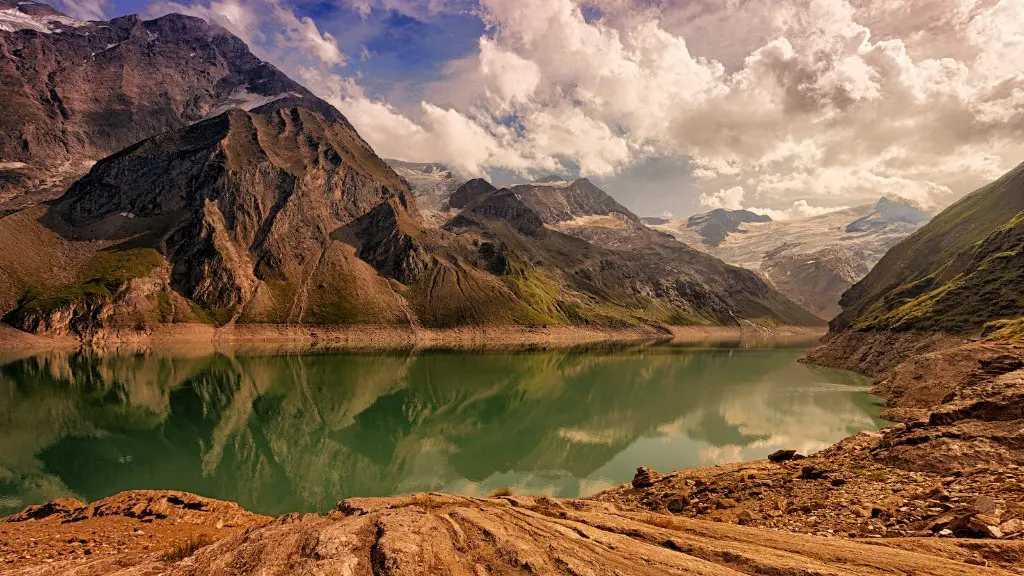Is The Nile Longer Than The Amazon?
The Nile river and the Amazon river are both large rivers that occupy a big part of their respective countries. But which one is longer? In this article, we compare the two rivers and provide relevant data and perspectives from different experts.
The Nile river is the main river in Africa and reaches a length of 4,132 miles (6,650 kilometers). It flows through 11 countries and then empties into the Mediterranean Sea. The Amazon River, on the other hand, is the main river system in South America and has a length of 4,345 miles (6,995 kilometers). Thus, the Amazon is longer than the Nile.
The Nile river is considered to be a very important river for both ecology and human life. It has a unique hydrological cycle and is home to many species of animals, plants, and fish. People have settled next to the Nile since ancient times, and agricultural activities in the area rely heavily on the river’s water.
The Amazon river is the largest and most powerful river in the world. Its waters are vital to biodiversity in the region, being home to more species of fish than any other river in the world. It also provides freshwater resources to millions of people who live along its banks.
Environmental Impact of Both Rivers
Despite the differences between them, both rivers have a significant impact on the environment, which is worrying for many people. The Nile river is facing a number of environmental pressures, including overfishing, climate change, and pollution. The Amazon is also affected by similar pressures, such as deforestation, increased water pollution, and illegal mining.
The environmental impacts of both rivers have been studied in detail by scientists and experts. The Nile river is particularly important for the countries that it flows through, as its waters are heavily utilized for drinking and irrigation purposes. In contrast, the Amazon river is a major source of freshwater for the Amazon rainforest, one of the world’s most biodiverse ecosystems.
The degradation of both rivers is a global concern. In recent years, there have been numerous efforts to protect and restore both rivers, including the creation of conservation and restoration projects. However, many of these efforts have been hindered by limited funding and a lack of political will to tackle the underlying causes of degradation.
Economic Impact of The Rivers
The economic impact of both the Nile river and the Amazon river is undeniable. In terms of hydropower, the Nile river is the primary source of hydroelectric power in Africa. It is estimated that the electricity produced from hydropower on the Nile generates an annual revenue of around $5 billion. The same can be said for the Amazon river, as much of the electricity generated in South America comes from hydropower plants located on the river.
Furthermore, both rivers have a significant impact on their respective countries’ economies. The Nile river is of particular importance to Egypt, as it is the main source of freshwater for growing crops, industry and for the country’s tourist industry. The Amazon river is just as important for its countries of origin, as it is a key source of transportation, fishing and other economic activities.
In conclusion, it is clear that both the Nile river and the Amazon river are of tremendous importance to their respective countries. Both of these rivers are facing similar environmental pressures, and thus, it is important to continue efforts to protect and restore both of them.
Sustainability Efforts For The Rivers
In recent years, many initiatives have been implemented to promote sustainability for both the Nile and the Amazon rivers. For example, there are a number of projects that are working to protect and restore the biodiversity of the river systems.
The World Wildlife Fund (WWF) is one of the organizations that is leading sustainability efforts for the Amazon river. The WWF has been working with local stakeholders to protect the rainforest and its biodiversity, as well as to promote the sustainable use of resources. Furthermore, the WWF has been instrumental in promoting clean energy initiatives in the Amazon basin.
In the case of the Nile river, there are also a number of projects that are aimed at improving the sustainability of the river system. These initiatives focus on promoting responsible water management, with the goal of ensuring that the river remains healthy and biodiverse.
Moreover, there are a number of initiatives that are aiming to improve the living conditions of the people living near both rivers. Projects such as the Nile Basin Initiative and the Amazon Fund are working to ensure that local communities have access to clean water and dependable livelihoods.
In summary, sustainability efforts for both the Nile and Amazon rivers are essential for the health and wellbeing of the local ecosystems and communities. It is important to continue such initiatives if we want to protect these important river systems for generations to come.
The Importance of Both Rivers
The importance of both the Nile river and the Amazon river cannot be overstated. They are both vital to the economies and livelihoods of the countries they traverse, and they both provide a wealth of biodiversity and natural resources that are essential to our planet’s health.
It is thus essential to continue making efforts to protect and sustain both rivers. This means working with stakeholders to ensure that rivers are managed responsibly and that local communities are empowered to make use of the resources the rivers provide in a sustainable manner.
Finally, it is important to remember that both the Nile and the Amazon rivers are incredibly precious resources and worth fighting for. We must continue to make efforts to ensure that these river systems remain healthy and biodiverse for generations to come.
Protection of the River Banks
The banks of both the Nile and the Amazon rivers are home to a number of species of plants and animals. It is therefore essential to protect the river banks in order to ensure the health and longevity of these ecosystems.
In the case of the Nile, many conservation initiatives have been implemented to protect the river banks and their biodiversity. These initiatives include the creation of protected areas and the implementation of anti-deforestation measures.
On the other hand, the Amazon river is facing a number of threats to its river banks, including deforestation and illegal mining. In order to protect the Amazon, the Brazilian government has implemented a number of initiatives, such as reducing deforestation in the Amazon Basin, regulating river traffic, and strengthening enforcement measures against illegal activities.
In summary, it is essential to protect the banks of both the Nile and the Amazon rivers in order to ensure their health and longevity. Governments, conservation organizations, and local communities must all work together to protect these fragile ecosystems.
Conclusion
To conclude, the Nile and the Amazon rivers are both incredibly important to their respective countries and the world at large. They are both under threat from damaging environmental pressures, and efforts must be made to protect and sustain both rivers.
It is clear that the Amazon river is longer than the Nile. However, despite their differences, both rivers have an immense impact on the lives of many people and the health of our planet. We must continue to work together to ensure that these rivers remain healthy and biodiverse for generations to come.





